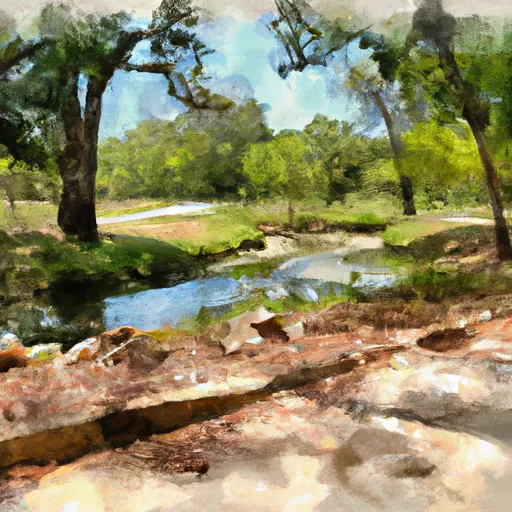Summary
The ideal streamflow range for this river run is between 200 and 500 cubic feet per second (CFS). The river is classed as a Class II-III, with some rapids and obstacles that can provide a challenging experience for intermediate paddlers. The total segment mileage of the Whitewater River run is approximately 7.5 miles, ending at the confluence with the Neches River.
The river run consists of several Class II rapids, including "Little Niagara," "Snoopy's Fall," and "Beehive." These rapids are created by rocky outcrops and fallen trees, which can provide a technical challenge for paddlers. The river also features several drops, including a 10-foot waterfall that is not suitable for inexperienced boaters.
To protect the natural resources and provide a safe experience, there are specific regulations for the area. Paddlers are required to wear personal flotation devices (PFDs) while on the river and are prohibited from littering or damaging the surrounding ecosystem. Camping is permitted only in designated areas, and fires are prohibited except in established fire rings. The National Park Service also recommends that paddlers check current water levels and weather conditions before embarking on the river run.
In summary, the Whitewater River run in the Lance Rosier Unit of the Big Thicket National Preserve provides a challenging and scenic experience for intermediate paddlers. The ideal streamflow range is between 200 and 500 CFS, and the river is classed as a Class II-III. Paddlers should be aware of specific rapids and obstacles, and follow regulations to protect the natural resources and ensure a safe experience.
River Run Details
| Last Updated | 2025-12-11 |
| River Levels | 346 cfs (2.05 ft) |
| Percent of Normal | 1% |
| Status | |
| Class Level | ii-iii |
| Elevation | ft |
| Run Length | 21.0 Mi |
| Streamflow Discharge | cfs |
| Gauge Height | ft |
| Reporting Streamgage | USGS 08041749 |
Weather Forecast
Nearby Streamflow Levels
 Pine Island Bayou Nr Sour Lake
Pine Island Bayou Nr Sour Lake
|
6cfs |
 Pine Island Bayou Abv Bi Pump Plant
Pine Island Bayou Abv Bi Pump Plant
|
3cfs |
 Neches Rv Saltwater Barrier At Beaumont
Neches Rv Saltwater Barrier At Beaumont
|
1250cfs |
 Village Ck Nr Kountze
Village Ck Nr Kountze
|
184cfs |
 Neches Rv At Evadale
Neches Rv At Evadale
|
1960cfs |
 Cow Bayou Nr Mauriceville
Cow Bayou Nr Mauriceville
|
2cfs |


 U.S. 69 4899, Lumberton
U.S. 69 4899, Lumberton
 Preserve Boundary In The Lance Rosier Unit To Confluence With The Neches River
Preserve Boundary In The Lance Rosier Unit To Confluence With The Neches River
 Roger's Park And Community Center
Roger's Park And Community Center
 Perlstein Park
Perlstein Park
 Village Creek State Park
Village Creek State Park
 Wuthering Heights Park
Wuthering Heights Park
 Caldwood Park
Caldwood Park